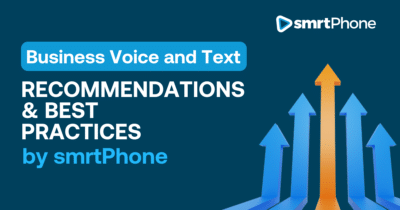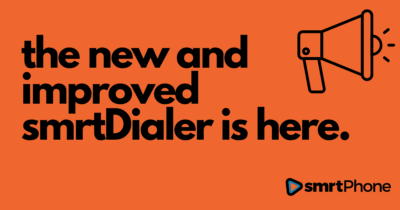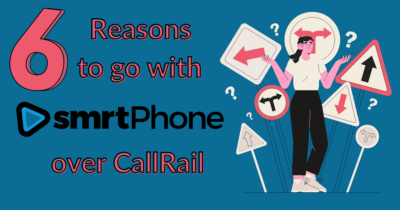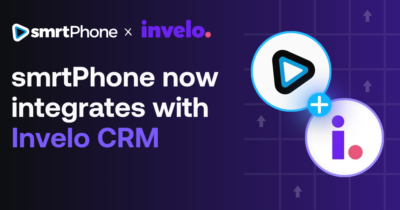There are five different types of text messaging services
You’re a business that utilizes texting – smart! You can reach anyone with a mobile phone, it allows you to craft the perfect copy ahead of communicating, and it can be faster than individual phone calls with a higher read rate than email. What’s not to love? Well, based on how you text, a lot!
Depending on how you set up business texting, there are often costs, carrier restrictions and other limits to consider. Before you decide how to text from your business, you have to learn the differences between texting options.
P2P
P2P is not business texting, but it’s helpful to start by understanding what business texting isn’t, before we explain what it could be. Peer-to-Peer texting is how you text your friends and family, and it’s as simple as it gets: one mobile plan to another.
Pros:
- It works for what it’s intended for, which is personal use.
Cons:
- There are limitations and regulations regarding who can send P2P texts, most importantly whether or not the recipient has opted in.
- It is not meant for business communication, and does not come with any of the services and features that a business phone system can offer, such as texting automation.
- P2P requires that each message be individually crafted and sent one-by-one. Mass outreach is not a function of P2P.
Toll Free
We’ve all seen toll free numbers – ten digits starting with 8 (800, 888, 877 etc.) which indicate the person who owns the number pays for both sides of the transaction, whether calling or texting. The receiving party does not have to “pay” with minutes or text fees.
Pros:
- Toll-free clearly indicates the text message is coming from a business.
- The area code is general to the United States, which has national appeal and is not specific to one region.
- The toll-free nature may appeal to contacts who don’t want to pay to interact with your company.
- All toll-free numbers are voice enabled: when you text from a toll-free number, the recipient can easily call you back.
Cons:
- What is a pro for some is a con for others; toll-free numbers are an immediate signifier that it’s a business communication and it can come across as impersonal, corporate, and faceless.
- Toll-free numbers are not location specific. If you’re a local real estate agent, landscaper or other community-oriented business, this type of number can make you seem out of touch with your clients and leads.
- More expensive! You, the owner of the toll-free number, end up paying for both sides of the communication.
Short Code
Short codes are, as named, shorter than an average phone number, often 6 digits. They are shared channels, and the keyword is what you own (or lease) as a business. A common use case is when a prospect texts a keyword to a short code in order to learn more about a business or make a charitable donation.
Pros:
- Short codes are ideal for niche use-cases, such as quick donations or sending information of extremely finite nature.
Cons:
- Room for error: short codes require your customers spell the keyword exactly right – a typo means a lost communication.
- Short codes are less memorable. We’re most comfortable recognizing and remembering 10 digit phone numbers and it’s a difficult shift for our brains to make.
- Despite seeming simpler, a short code requires your customer remembers two sets of information: the short code as well as the keyword.
- You don’t own the short code! You only have exclusive rights to the keyword that is being used by your customers and leads, which leads into the next point…
- Short codes don’t translate to voice. An interested party cannot use your short code to call you for more information, because it’s not a phone number.
OTT
Over the Top communication is application to application. Think WhatsApp, Facebook Messenger, and any communication within an application.
Pros:
- Often free, hosted entirely by the application you’re within.
- Many people already use the applications (Facebook, Instagram) that OTT occurs in.
Cons:
- Relies heavily on the regulations and limitations of the application you’re using, which can become constricting.
- Requires that all of your customers use the same form of social media which is limiting and presumptuous.
- It can require your employees checking many different forms of communication with no aggregation of the conversations or data, which wastes time and can lead to poor customer service.
- It often results in incomplete communication data due to being separate from other communication platforms.
- No additional services or features to improve or keep track of texts.
- Often the messages are sorted outside of your control, and can end up in “message request” inboxes that are rarely checked, which decreases response rates.
A2P 10DLC
A2P stands for Application to Person, and 10DLC refers to a standard 10 digit long code, or a local phone number. Basically, it’s the use of software on one end to send texts directly to individuals. It utilizes the benefits of an application to initiate communication while ensuring it’s received as an SMS text message directly to your client’s or lead’s main phone inbox.
Pros:
- Your recipients don’t have to download a special app to receive your texts, they’ll come through as typical texts on their phone.
- Local 10 Digit phone numbers are voice enabled. You can easily follow up a call with a text from the same number, or your prospect can dial you back directly from your text message.
- You can send your texts from anywhere – desktop or phone app – when the A2P system is cloud-based.
- Business-focused applications often have features that improve your texting in multiple ways. Increase efficiency, enhance professionalism, and provide data analysis, all which can strategically help your business.
- Separate A2P channels exist for businesses that increase speed, throughput, and deliverability, compared to P2P.
- A2P allows you to use local area codes, which can make prospects and clients much more likely to answer.
- More personable! Unlike short codes and a lot of toll-free numbers, A2P allows for the communication to feel human and personal. People are much more likely to interact if it feels like there is a real person on the other end of a text, which aids in response rate and relationship building.
Cons:
- Due to new regulations by receiving carriers (AT&T, T-Mobile, etc.), all businesses who want to use technology to text must register their businesses to access the A2P channel. This may require some time and additional fees. This change will happen across all A2P platforms.
- Because of the registration requirement, companies sending text messages that violate the TCPA are more likely to be found and fined. Which means these new requirements aren’t really a negative for honest businesses.
smrtPhone: Compliant A2P Communication
smrtPhone offers both A2P and Toll-Free texting to clients. Though some businesses use just Toll-Free or utilize both, the vast majority choose to focus on A2P communication because it’s the best of both worlds: all the benefits of a cloud-based application while sending texts directly to any type of phone. smrtPhone makes texting faster, easier and links directly to your CRM for seamless data integration and better reporting.
Some benefits of using smrtPhone for your business texting:
- Texting is linked directly to your client or lead’s profile, which includes notes, call logs, call recordings, and previous texts for reference. You can even send images from your smrtPhone Mobile App and have them automatically logged in your contact record in your CRM.
- If you experience employee turnover, previous communication isn’t lost, and can be immediately transferred to someone else, a unique advantage to A2P and smrtPhone over other forms of business texting.
- Flexibility to send texts from your computer or Mobile App. Your inbox is centralized, accessible anywhere, and fed directly into your CRM.
- Crafting texts from a desktop or a phone allows for both quick on-the-go communication or thoughtful, pre-planned copy that may require proofreading or approval.
- Automation, automation, automation: integration with your CRM can allow for triggered texts based on activities or milestones related to your contact. Not only are you saving time by not having to send the text, you’re reaching out to your lead at the first possible moment they’d need to hear from you.
- Group Inbox: one phone number can be assigned to a group of users (let’s say your Accounts Receivable team) and when a customer texts that number, multiple people can receive it at the same time and anyone can respond. This increases the chance it will get answered quickly, providing superior customer service. And don’t worry – the communication will then be seen by everyone else in the group.
- Data analysis of texts, whether answered or not, can be an invaluable asset to your company, regardless of whether you’re a large or small team. smrtPhone allows you to hone in on what’s working and what’s not.
- smrtPhone is on top of the compliance and regulation rules around texting, so you’re not having to waste time researching for yourself.
smrtPhone can help you learn about the issues surrounding legal regulations and compliance when it comes to business texting, but it’s up to you to make sure your texts are following the rules. Remember to keep abreast of state and federal laws, as well as your own carrier restrictions. If you violate these rules, your account can be suspended from sending messages.
Here are three keys to texting compliance:
- Get consent
- Offer revocation of consent (Opting out)
- Make sure the actual content of the message follows state and federal laws.
A good rule of thumb is to send texts that you’d want to receive, and be honest and proud of your communication. smrtPhone may be able to help you in an appeal of a violation, but ultimately you are responsible for the messages your business sends. Read more here about texting compliance and reach out to our customer support team at any time!
Don’t let your texting application become an afterthought: it can be a make or break business decision in an age when texting is one of the most reliable forms of communication. Let smrtPhone become your resource on business texting, so you can save time and energy on building other parts of your business.






